The main caliber of the Soviet Union: 406-mm gun at the Rzhevsky test site
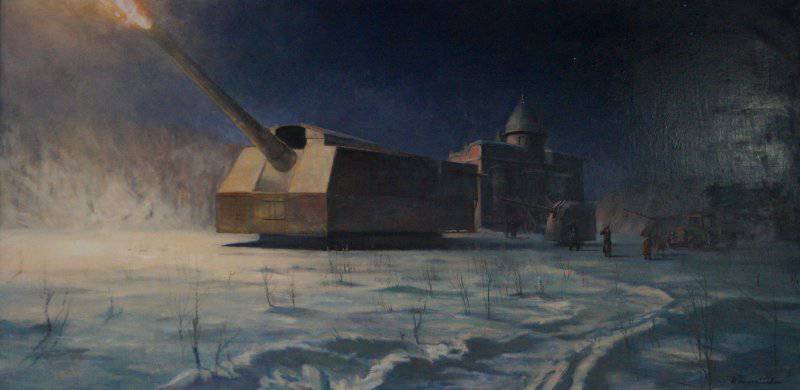
In the closed territory of the Rzhev landfill there is an instrument that could rightfully be called the "Main caliber of the Soviet Union." With equal success, it can claim the title "Tsar Cannon". Still, after all, its caliber is no less than 406 mm. Created on the eve of the Great Patriotic War, the artillery installation was intended for arming the world's largest battleships "Soviet Union", "Soviet Belorussia" and "Soviet Russia". These plans did not come true, but the guns themselves served their good service during the defense of Leningrad, and by this alone they earned the right to take a worthy place in the museum. But while a unique monument stories domestic weapons does not even have the status of a museum exhibit ...
Whoever visited the Moscow Kremlin, of course, saw the famous “Tsar Cannon” there, cast by Russian gunsmith Andrey Chokhov in 1586. But few know that its Soviet counterpart exists. This is the most large-caliber artillery gun of the Soviet Union, on the eve of the war passed field testing, and in the years of the Great Patriotic War defended besieged Leningrad from the enemy.
In the early 1920s, naval and coastal artillery of the Soviet Navy fleet significantly lagged behind the corresponding artillery of the leading capitalist states. At that time, a whole galaxy of talented designers of naval artillery systems and the organizers of their serial production worked in the USSR: I.I. Ivanov, M.Ya. Krupchatnikov, B.S. Korobov, D.E. Bril, A.A. Florensky and others.
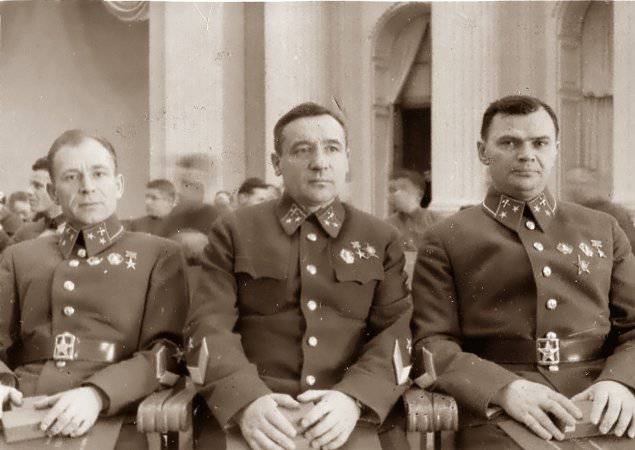
The greatest success of the Soviet designers and artillery factories was the creation of a unique and complex 406-mm artillery system - a prototype of the guns of the main caliber of new battleships.
In accordance with the new USSR shipbuilding program, new battleships were laid on shipyards of shipyards: in the 1938 year the Soviet Union and Soviet Ukraine, in the 1939 year the Soviet Belarus and in the Soviet Union the 1940. The total displacement of each of the battleships that embodied the traditions of domestic shipbuilding and the latest achievements of science and technology was 65 150 tons. The power plant was supposed to provide speed 29 knots (53,4 km / h). The main armament of the battleships - nine 406-mm guns - was located in three armored towers, two of which were located in the nose. Such an arrangement of the main caliber made it possible in the best way to direct and concentrate the fire of 16-inches that fired thousands of kilograms of shells at a range of 45 km. The artillery armament of the new battleships also included twelve new 152-mm guns, eight 100-mm universal guns, and thirty-two 37-mm anti-aircraft guns provided the air defense of each ship. Artillery targeting was carried out with the help of the latest rangefinders, automatic fire control devices and four seaplane spotters, for which launch was provided a catapult.
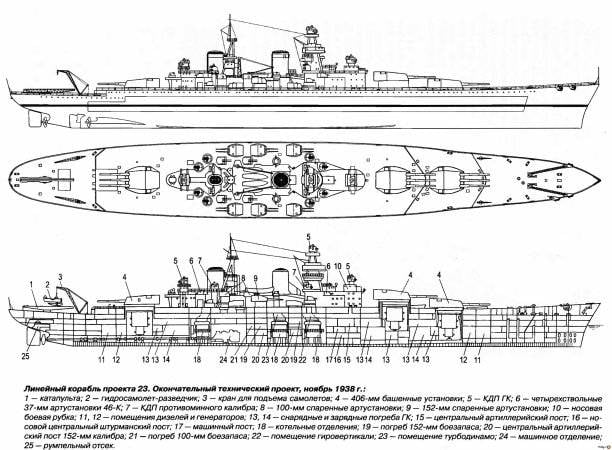
The designed 406-mm turret was a unique artillery system, for which all elements — from the gun itself to ammunition — were developed for the first time.
The very experienced MK-1 artillery mount was manufactured in less than a year.
By order of the People's Commissar of the Navy, Admiral N.G. Kuznetsova 0350 number of 9 June 1940 years for the production of ground tests 406-mm gun D-37, the swinging of the MK-1 to the gun D-37, landfill machine MP-10 and ammunition artillery system (shells, charges, gunpowder and detonators) was Commission appointed under the chairmanship of Rear Admiral I.I. Grenna. The test program developed by the Institute of Nuclear Physics (Artillery Maritime Research Institute) was approved by the Chief of the Naval Forces AU, Lieutenant General of the Coast Service I.S. Mushnovym. The test leader was appointed military engineer 2 rank S.M. Reidman.
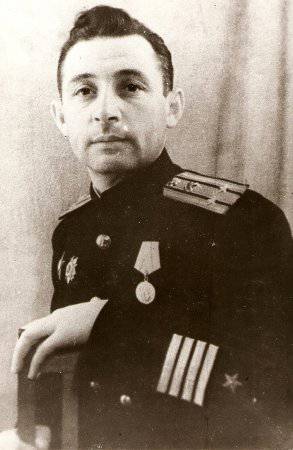
The ground tests began at the NIMAP (Naval Research Artillery Ground) 6 July 1940. The total amount of testing was determined in 173 shot with the expected survivability of the barrel 150 shots.
The ballistic characteristics of the gun were as follows: the initial velocity of the projectile with its weight 1 105 kg - 830 m / s, muzzle energy - 38 800 t. M., The maximum pressure of the powder gases in the barrel / 3 200 kg / cm2, the maximum range of the projectile - 45,5 km. The weight of the swinging part is 198 tons, the ratio of muzzle energy to the weight of the swinging part is 196,5 tons. The mass of the barrel with the breech and bolt B-37 was 140 tons, and the rate of fire of the gun - 2,6 shot per minute.
During this period, a lot of work was done on preparing the measuring base at the naval artillery ground, which reached a very high level by 1940 in the year and made it possible to widely apply instrumental methods of control, including oscillography of dynamic processes.
The preparation and testing was difficult and stressful, especially in terms of preparing ammunition (projectile weight - 1 105 kg, charge - 319 kg), it took a lot of time to dig them out of the ground after the shot, assembled and delivered to the laboratory for inspection and measurement. Many experiments in the testing process were innovative. So, when shooting at a distance of 25 km, in order to find out the reasons for the increased dispersion of projectiles, it was necessary to build ballistic frames with a height of 40 meters. At that time, the initial flight speed of the shells was determined only by chronographs, so after each shot on these target frames it was necessary to change the wire-wound winding damaged by the charge, which also presented great difficulties. Each shot from the B-37 gun was of high importance, so the tests were built very thoughtfully in the interests of the whole complex of tasks. The results of each shooting were considered in the subcommissions on the affiliation of issues and were often discussed at the general meeting of the commission.
October 2 1940, the ground tests of the B-37 gun, the swing of the MK-1, the MP-10 machine and the ammunition were completed.
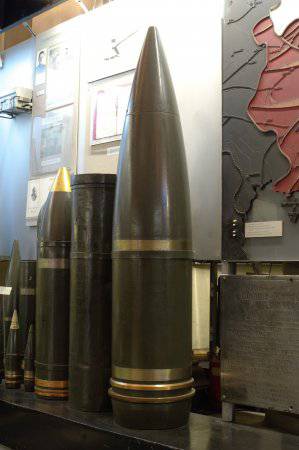
The findings of the report of the commission noted: "The tests of the 406 / 50-mm guns B-37, the swinging part of the MK-1 and the polygon machine MP-10 gave quite satisfactory results." So many months of hard work of design engineers and test artillery testers were so succinctly noted.
The swinging part of the MK-1 with the B-37 tool was recommended by the commission for mass production with some design changes.
Admiral of the Soviet Navy N.G. Kuznetsov in his memoirs “On the Eve” recalls: “... In August [1941], I went to the Baltic ... The head of the sea range, Rear Admiral II Gren, asked to go on the test of a twelve-inch gun.“ The best gun in the world ”- he said. And, as life showed, he did not exaggerate. They showed me a sixteen-inch gun for future battleships. This weapon - a clear proof of our economic capabilities and talents of Soviet designers - also turned out to be excellent ... "
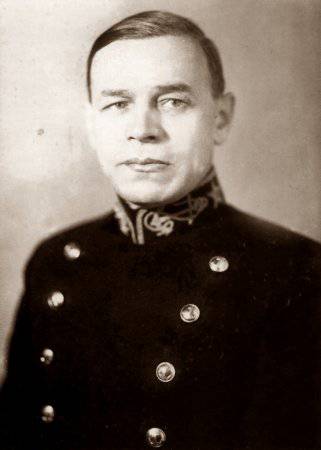
October 19 1940, due to the exacerbation of the international situation, the Soviet government adopted a resolution focusing on building small and medium-sized warships and completing the construction of large ships with a high degree of readiness. The battleship "Soviet Union" was not among the latter, therefore mass production of 406-mm guns was not deployed. After the end of ground tests, the B-37 gun continued to remain at NIMAP in Leningrad.
22 June 1941, the Great Patriotic War began. In the first weeks, Hitler's troops managed to delve into the territory of the Soviet Union. In mid-August, 1941, fierce fighting began on the near approaches to Leningrad. As a result, the rapid advance of the enemy has developed a threatening situation. Mortal danger hung over the city. The Red Army troops in all directions courageously repelled the attacks of superior enemy forces.
The Red Banner Baltic Fleet, at the end of August 1941, concentrated in Leningrad and Kronstadt, greatly assisted the Leningrad Front with its powerful long-range ship and coastal artillery, which covered the entire blockade with a reliable fire shield covering the city.
Immediately after the start of the war, NIMAP took an active part in resolving issues related to the preparation of Leningrad for defense. In the shortest time possible, a skillful, fast and purposeful restructuring of his work in the interests of the defense of the city was carried out. Due to the heavy weight, the artillery installations of the sea range could not be evacuated, and they began to be prepared for the battle for Leningrad.
In July-August, the 1941 of the year at the naval artillery range was brought to battle all the available artillery weapons, formed and prepared for combat, the artillery division and the team MOPV (local air defense).
During the preparation of NIMAP for the defense of Leningrad, the barrel was changed and 406-mm guns (B-37) were booked, all gun mounts were prepared for round-up fire, pickup points were installed with a light reference point for night firing, four command posts of artillery batteries and two armored artillery cellars were equipped near firing positions.
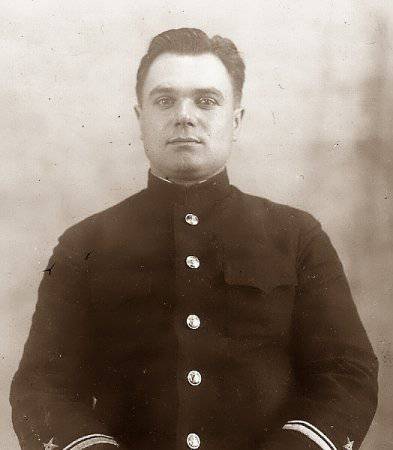
The entire artillery of the naval test site consisted of fourteen guns: one 406 mm, one 356 mm, two 305 mm, five 180 mm, one 152 mm and four 130 mm. The 406 mm caliber cannon was included in battery No. 1, which besides it also included one 356-mm and two 305-mm tools. These were the guns of the main caliber, the most powerful and long-range. The commander of the battery was appointed military technician 2 rank Alexander Petrovich Kukharchuk.
At the end of August 1941, the artillery of NIMAP was ready to start combat missions, and on the eve of this, the following message was published in the Leningradskaya Pravda newspaper: "Starting from August 22, test shooting will be conducted from the Leningrad Landfill, which is publicly reported The military commandant of the city of Leningrad, Colonel Denisov. "
The NIMAP fired its first combat shots on August 29, 1941, according to the concentration of enemy troops in the area of the Krasny Bor farm on the Kolpino direction precisely from the B-37, the most powerful and long-range weapon of the USSR Navy. And already at the beginning of September a column of enemy troops was moving in the same direction tanks with the goal of breaking through to Leningrad, and again the powerful explosions of 406 mm shells lying in the head and tail of the column caused confusion among the enemy and forced him to stop. The surviving tanks turned back. The militia fighters from the Izhora battalion, who defended Kolpino, always with great gratitude recalled the artillerymen of the naval firing range who, with their fire, helped them keep the defenses on the outskirts of Leningrad.
From 29 August to 31 December 1941, the artillery of NIMAP opened fire 173 times, destroying large concentrations of manpower and equipment of the enemy and suppressing its batteries. During this period, the 406-mm cannon launched a 81 projectile (17 high-explosive and 64 armor-piercing) at the enemy.
In 1942, the naval artillery range completed 9 combat firing. February 10 gun B-37 its fire supported the offensive operation 55-th army in the settlements of Krasny Bor, Yam-Izhora and Sablino. Three shells were expended. On the results of this operation it is known that: "... in the area where the 55 Army was holding the defense, the artillerymen distinguished themselves. In one day they destroyed 18 guns and 27 machine guns, destroyed 19 bunkers and dugouts." The 406-mm gun of the naval artillery range also contributed to these losses of the enemy.
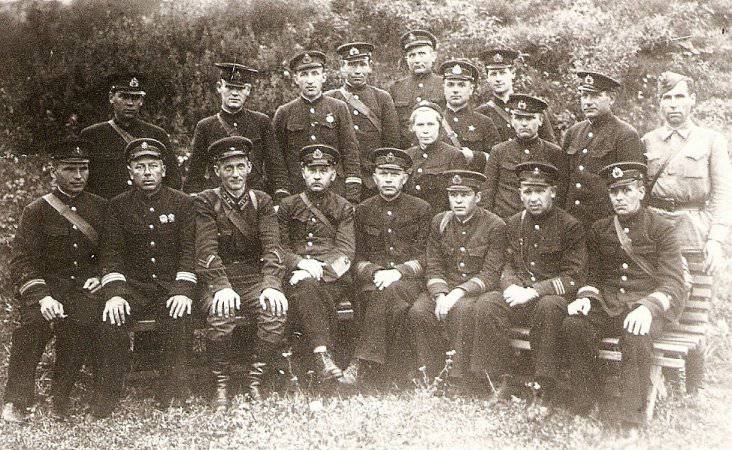
Here is how an eyewitness to those events, a participant in the defense of Leningrad, Nikolai Kislitsyn describes his impressions of the B-37 combat use: “I remember how, among the familiarly sounding explosions of shells and shots of our artillery, a muffled, powerful sound that shook the glass was occasionally heard somewhere. I was perplexed until I met with one artilleryman. It turned out that in the pre-war era, the design and construction of the latest high-class surface ships had been deployed. For them at the marine training ground near Leningrad tests of a 406 mm caliber guns with fired shells carried out with long range over a certain area of the firing range.The gun was successfully tested. objects deep in the enemy’s location.The stock of shells turned out to be small, and when it was used up, the gunners began to dig shells buried deep in the ground during the tests and bring them to ooya state. Enemy aviation in vain sought the firing position of this giant, skillful disguise helped him to remain undetected ... "
8 December 1942 of the Year The Supreme Command of the Red Army issued a directive to conduct an offensive operation to break the blockade of Leningrad.
The operation began on 12 on January 1943 of the year in 9 hours 30 minutes. During 2 hours, 20 was storming with artillery hurricane at the positions of the enemy; and 4 gunboats. The Red Banner Baltic Fleet artillery also included an 500-mm gun of the naval artillery range.
On January 12, during the 3 hours of 10 minutes, it conducted a systematic fire at the enemy’s resistance centers around the 8 Hydroelectric Power Station, a high explosive 22 projectile was used.
February 13 it also led artillery fire on defensive lines, fire weapons and enemy manpower in the area of 8-th hydroelectric station and 2-th Working village, 16 shells (12 high-explosive and 4 armor-piercing) were spent.
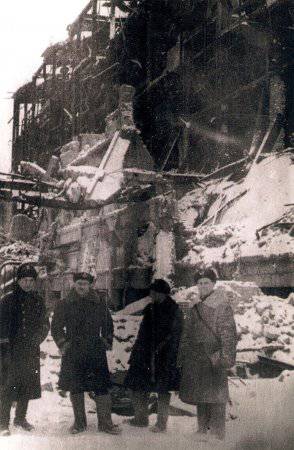
At the end of 1943, Leningrad continued to remain on the front line of fire. If the enemy’s planes were no longer able to bomb the city either in November or in December, then shelling from large-caliber guns continued. Artillery shelling kept Leningrad in constant tension, it was necessary to rid the city of them. Considerations of a strategic plan demanded a complete lifting of the blockade of Leningrad and the expulsion of the German fascist invaders from the Leningrad Region.
The Supreme High Command Headquarters, planning military operations to liberate the territory of the Soviet Union, decided to launch the 1944 year with an offensive operation near Leningrad and Novgorod (First Stalin strike).
On 14 January, 1944 was scheduled to begin operations for the complete liberation of Leningrad from the enemy blockade.
On the morning of January 14, during 65 minutes, enemy positions were shelled by artillery of the Leningrad Front and the Red Banner Baltic Fleet, 100 thousands of shells and mines hit the enemy’s battle formations.
January 15 troops of the Leningrad Front struck a powerful blow to the enemy from Pulkovo Heights. 200 guns and mortars 100 minutes crushed the enemy fortifications, literally plowing trenches and message strokes, pillboxes and bunkers. More than 200 guns of the naval and coastal artillery of the Red Banner Baltic Fleet beat the positions of large-caliber artillery, resistance centers and enemy strongholds.
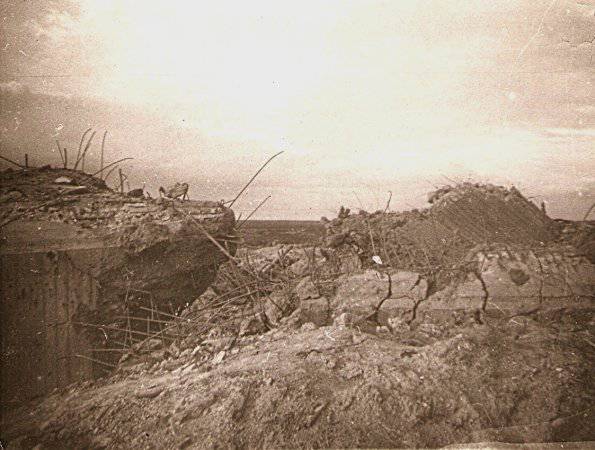
In the offensive, the Leningrad Front supported artillery of the Red Banner Baltic Fleet as part of 215 guns with a caliber from 100 to 406 mm. Attracting large-caliber coastal (stationary and railway) and naval artillery ensured the defeat of targets located at a considerable distance from the enemy’s advanced defense.
15 January 406-mm gun fired at planned targets in the vicinity of the town of Pushkin, 30 shells were spent.
20 January it bombarded targets in the area of the village Koporskaya and well. D. station Antropshino, it was spent three shells.
From 15 to 20 in January 1944 of the year during the offensive operation of the Leningrad Front to completely liberate Leningrad from the enemy blockade, 37 projectile (33 high-explosive and 28 armor-piercing) were launched with the B-5.
In the course of this operation, target No. 23 (height 112,0) was destroyed - the enemy’s resistance node on the approaches to Pushkin from the north.
On the destruction of this target 406-mm gun naval artillery range former commander of the Red Banner Baltic Fleet Admiral V.F. Tributs recalled this: “I had known about this so-called target number 23 before. But I checked my assumptions by telephone, called the commander of the fourth [artillery] group, engineer-captain 1, rank I.D. Snitko. He confirmed my information, and I instructed him to fundamentally engage in a malicious “nut.” The 406 mm gun managed to split it. At the height of 112, an explosion soon took off and a huge fire broke out. As it turned out, the reinforced concrete command post was destroyed, long-term facilities and air ammunition depots were lifted.
The artillery of the Red Banner Baltic Fleet fulfilled the tasks assigned to it to secure the offensive of the troops of the Leningrad Front and free Leningrad from the enemy blockade. During the 14 days of the offensive operation, she spent 1 005 firing, firing 23600 shells of various calibers from 100 mm to 406 mm to the enemy.
After the defeat of the Nazi troops in the south-west direction for Leningrad, the threat from the north-west, from Finland, whose army occupied the defense on the Karelian Isthmus for about three years, remained.
In the Vyborg offensive from the Red Banner Baltic Fleet, 49 naval ships (130 – 305 mm) took part; Coastal 125 (100 – 406 mm). In accordance with the order of the Red Banner Baltic Fleet artillery commander No. 001 / OP from 2 June 1944, two long-range guns of the sea range, 406 mm and 356 mm, entered the third artillery group.
During the first four days of the offensive, the Red Banner Baltic Fleet launched 582 firing and spent more than 11 000 shells with a caliber from 100 mm to 406 mm.
June 9 gun B-37 fired at planned targets, while it was spent 20 shells, and 10 June it also fired at one unplanned target, and it was spent 10 shells. All shells were high-explosive.
According to the results of the inspection of targets hit near the railway station Beloostrov, the following results were obtained:
- fire on the target G-208 - command height, which was part of the overall system of the enemy's resistance node. The fire led 406-mm gun. Were destroyed: machine-gun point along with the calculation, two machine-gun nests, armored observation tower. Trenches and a section of the road were also destroyed, forcing the enemy to throw four 76-mm guns. On the road, many corpses of enemy officers and soldiers are left lying;
- fire on the target G-181 - command height in the village of Pebbles. The fire led 406-mm gun. Direct intersection of the projectile destroyed the intersection of roads from three directions, which prevented the enemy from taking out anti-tank and anti-aircraft batteries. In the area of the 152-mm and 210-mm positions of enemy artillery batteries were craters from hitting 406-mm shells.
As a result of the Vyborg offensive operation, a large group of Finnish troops was defeated and the northern part of the Leningrad Region was liberated, after which the battle for Leningrad was finally completed.
For the B-37 gun it was the last combat shooting.
Over the entire period of Leningrad’s defense, 406 rounds were fired from 185-mm guns, while 109 high-explosive and 76 armor-piercing shells were fired.
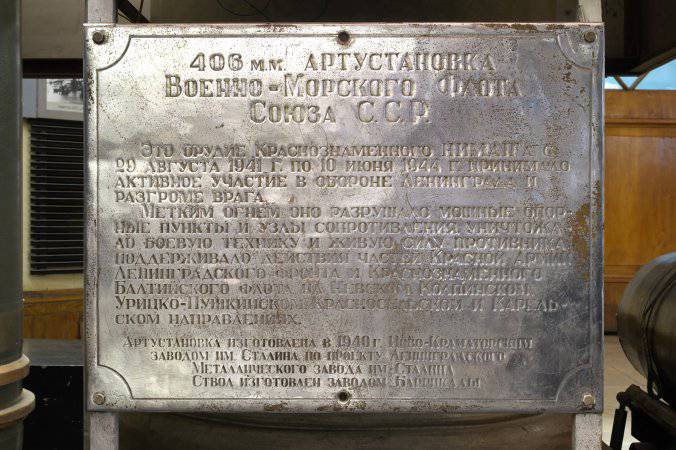
After the end of World War II by the decision of the command of the Navy, a memorial plate was installed at the B-37, currently stored in the Central Naval Museum in St. Petersburg. The following is stamped on it: "406-mm artillery installation of the USSR Navy. This is the gun of the Red Banner NIMAP from 29 in August 1941 of the year to 10 in June. 1944 of the year took an active part in the defense of Leningrad and defeating the enemy. resistance, destroyed military equipment and manpower of the enemy, supported the actions of the Red Army units of the Leningrad Front and the Red Banner Baltic Fleet on the Nevsky, Kolpinsky, Urytsko-Pushkinsky, Krasnoselsky and Karelian directions. "
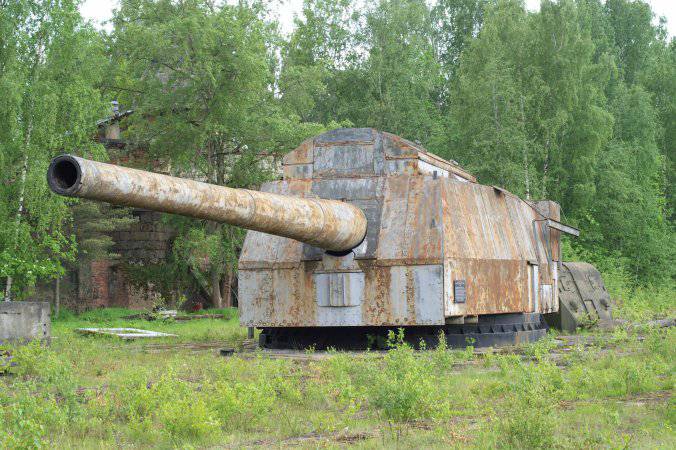
In order to preserve this unique weapon for posterity, it is necessary to create a museum of naval armament and equipment on the Rzhevsky proving ground, which will house exhibits that, because of their weight and size characteristics, do not fit in other military historical museums. And such exhibits, in addition to the B-37, are already available. For example, the 406-mm coastal gun 305, which also defended Leningrad during the Great Patriotic War, and the barrel on it, by the way, is inherited from the battleship Empress Maria, standing next to the 1915-mm artillery unit.
The museums of military equipment and armaments — tank, aviation, automobile, etc. — whose interest is constantly growing, already exist in other regions. So maybe it is time to organize a similar museum in St. Petersburg - a museum of naval weapons and equipment? In the same place it will be possible to present also test work of the Navy landfills. And it does not matter that this museum will be located not in the historical center. After all, there are museums away from the city center, visited with no less interest. It would be interesting to know the opinion of the Minister of Defense of the Russian Federation and the Governor of St. Petersburg on this issue, because the decision to create a new state museum at the Rzhevsky testing ground needs to be taken today.
Information